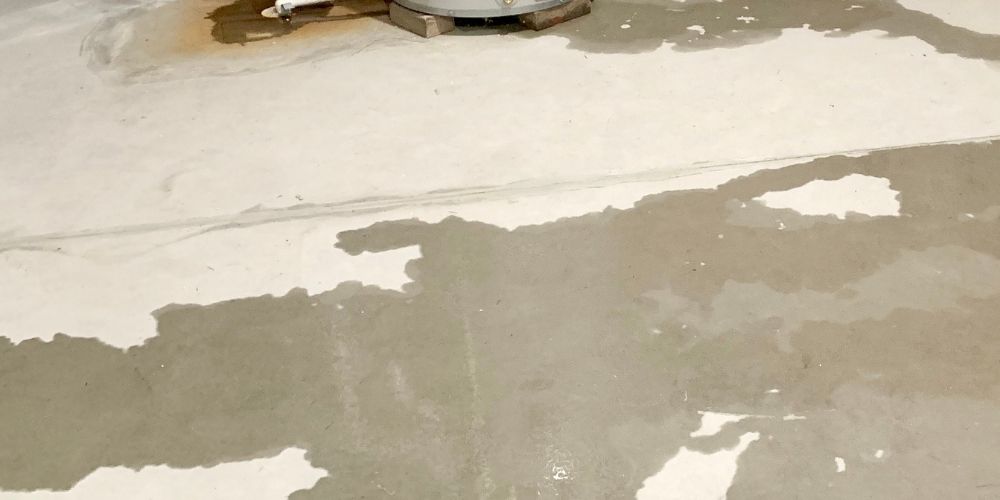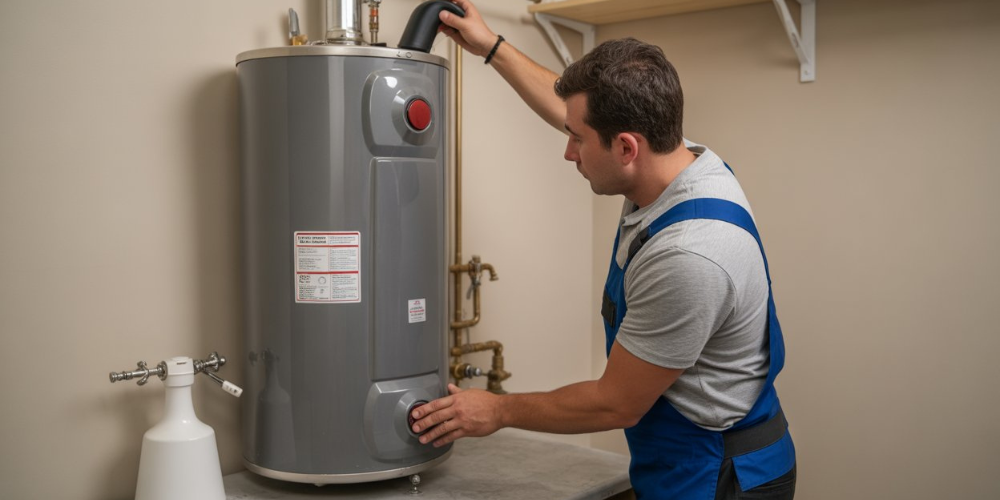You purchased a water softener to remedy your hard water issues. So why is your skin still parched? Why are your dishes still lacking in luster? Here’s the situation: Even the finest water softeners demand regular upkeep. Neglect the necessary maintenance, and your unit will cease performing its primary function.
Proper water softener maintenance includes regularly refilling the salt, cleaning the brine tank, and keeping an eye on regeneration cycles. It’s also essential to clean or replace pre-filters, inspect parts for signs of wear, and schedule annual professional servicing to ensure long-term performance.
In what is perhaps the best piece of news you could receive, maintaining your serviceable water softener is actually pretty simple.
Let’s figure out how this works!
Why Regular Water Softener Maintenance Matters?

Your home water softener works hard every day. It removes minerals that make your water “hard.” But without proper care, it starts to fail.
Here’s what happens when you skip water softener maintenance.
- The resin beads get clogged with iron and sediment.
- Salt builds up and creates a thick crust.
- Your system uses more salt but produces less soft water.
- Eventually, it stops working altogether.
Regular maintenance prevents these problems.
- Clean resin beads work efficiently.
- Fresh salt dissolves properly.
- Your system lasts longer and uses less salt.
- You save money on repairs and replacements.
Think of it like changing your car’s oil. A little effort now prevents big problems later. Your home water softener needs the same attention. Take care of it, and it will take care of you.
Also read, Top 6 Water Softener Maintenance Tips to Keep Your System in Top Shape
Key Factors That Influence Water Softener Efficiency
Ever notice your water softener isn’t working as well? A few things might be causing problems. Here’s what to look for.
1. Water Hardness Level

Hard water makes your home water softener work overtime. When mineral levels are high, it needs more salt and regenerates more often. Test your water regularly to know what you’re dealing with. Higher hardness means more maintenance ahead.
2. Household Water Usage
An increase in population directly translates to increased water consumption. The home water softener is not designed to handle sudden surges in demand.
It is especially large families that may place an additional burden on this unit, which was never intended to serve such a load. Consider upgrading if your current system can’t keep up.
3. Type and Quality of Salt Used

Using inexpensive salt may seem like a way to save money, but it ends up costing more in the long run. Low-quality salt has impurities that make the water softening system work less effectively and that cause other problems.
The home water softening system will work much better and will have a longer life if you use high-quality pellets instead of low-quality ones.
4. Regular Maintenance
The most fatal blow to efficiency that you can deliver is to skip maintenance. The home water softener should have its brine tank cleaned at least once a month, and its salt level checked weekly.
Filters, if your water softener has them, should be replaced when they get dirty. That’s called maintenance. If you skip it, your water softener won’t work as well.
5. System Age and Size
Older systems naturally lose efficiency as parts wear out. An undersized unit can’t handle your household’s daily water demand. If your home water softener is over 10 years old, it’s time to consider an upgrade.
Essential Water Softener Cleaning Tips
Your water softener gets dirty over time. This makes it work poorly. Here are easy ways to clean it and keep it running well.
1. Clean the Brine Tank Every 6–12 Months

Empty your brine tank completely and scrub away salt buildup. Use warm water and a soft brush to remove stubborn residue. This water softener cleaning tip prevents bacterial growth and keeps your system running smoothly.
2. Break Up Salt Bridges
Salt bridges happen when salt hardens into a thick crust above the water. Your system can’t dissolve this hardened salt properly. Break bridges with a broom handle or similar tool.
3. Flush Out Salt Mushing

Salt mushing creates thick sludge at the tank bottom. This blocks proper water flow and salt mixing. Scoop out the mushy salt and rinse the tank thoroughly.
4. Use Resin Cleaner Periodically
Resin beads collect iron and other minerals over time. Add resin cleaner during regeneration cycles every few months. This water softener maintenance step removes buildup and restores the beads’ effectiveness for better water softening.
5. Check for Blocked Valves and Hoses
Check all connections for clogs or mineral buildup regularly. Clean blocked valves with a soft brush and warm water. Replace cracked or damaged hoses immediately.
How Maintenance Boosts Savings and ROI on Your Home Water Softener?
Regular maintenance makes your water softener save you money. Well-maintained systems use less energy and water. Your water heater works better with soft water. You can save up to 30% on heating bills because soft water heats faster.
Here’s how proper care pays off:
Monthly utility savings

Soap and detergent work better with soft water. Your clothes need less washing powder. Dishes get clean with less detergent. These small savings add up to big money over time.
Longer system life
Good maintenance helps your system last 10-15 years. Neglected units often break after just 5-7 years. Regular care means fewer repairs and better performance.
Fast payback
You’ll use less salt because the system works right. Most homeowners get their money back within 3-5 years.
Annual maintenance generally costs $50-$100 per year. This includes salt, cleaning supplies, and filter replacements.
Neglected systems need expensive repairs or early replacement. Prevention costs way less than fixing problems later.
Federal tax credits usually don’t apply to water softeners. But some local utilities offer rebates for water-efficient systems. Check with your city or state programs. Your local utility might have special deals.
Let’s say: A family spends $1,200 on their water softener. Annual maintenance costs them $75.
They save $300 yearly on utilities, soap, and protecting their appliances. Their payback period is just 4 years.
San Antonio’s very hard water makes the benefits even bigger. After 4 years, they will start saving money every month.
Also read, How to Choose a Water Softener?
Long-Term Benefits Beyond Cost Savings

Water softener maintenance does more than save money. It protects your entire home for years to come.
Regular cleaning keeps your pipes free from mineral buildup, and your appliances last longer when they don’t fight hard water every day.
- Your family enjoys immediate benefits from proper water softener maintenance:
- Soft water makes your skin feel smoother and your hair softer after every shower.
- Clothes come out brighter and last longer.
- Dishwashers, washing machines, and water heaters work better with soft water.
Regular water softener maintenance shows you care about your home’s condition. It’s an investment that pays off when you sell.
Wrapping Up…
Caring for your water softener is simple. It merely requires some time and the proper procedures. When you maintain your softener regularly, you enjoy cleaner water, lower bills, and a longer-lasting system.
Need assistance? You can rely on the pros at PlumbSmart to keep your in-home water softener operating without a hitch, all year long.





